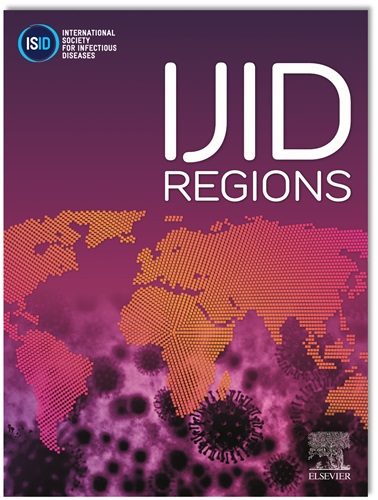在奥里萨邦流行区消除动物对人类炭疽疾病传播的一项卫生干预:基线和终点研究
IF 4.8
2区 医学
Q1 INFECTIOUS DISEASES
引用次数: 0
摘要
炭疽是由炭疽芽孢杆菌引起的一种罕见但严重的公共卫生传染病。包括奥里萨邦在内的印度多个邦都有炭疽病例的记录。在奥里萨邦,科拉普特地区在过去六年中因炭疽感染报告了300多例人类病例,并确认了10多人死亡。本研究是一项基线和终线调查,以评估在该流行地区为消除人类炭疽而量身定制的单一健康干预措施实施前后,居住在该地区的土著居民社区对炭疽疾病的知识、态度和做法。这是一项重复的横断面调查,在2020年中期对2670名受访者进行基线调查,并在2022年底对2511名受访者进行终点调查,采用多阶段抽样方法,使用85项结构化问卷。描述性统计报告和逻辑回归来估计变量和炭疽知识之间的关系。在科拉普特地区各多方利益攸关方的帮助下,制定了一揽子保健干预措施,其中包括建立积极监测,在该州建立专门的炭疽诊断设施,以便对所有利益攸关方进行早期诊断、宣传和能力建设培训。在地区兽医部门的帮助下,在其他利益相关方的协调或支持下,在社区开展行为改变交流(BCC)和信息教育交流(IEC)活动,并在全区开展免费牲畜疫苗接种活动,以顺利开展疫苗接种活动。结果研究对象中男性分别占76.25%(基线)和72.08%(终点),两组均约有一半未接受过正规教育。大多数被调查者(基线为54.19%)和期末为54.56%)从事农业。超过50%的回答者在家中饲养牲畜,在这两个群体中,养殖是饲养牲畜的主要目的。在基线时,约20.26%的受访者了解炭疽,干预后,53.64%的受访者了解炭疽。近21.29%的家畜饲主已为其家畜接种炭疽疫苗,在调查结束时上升至66.5%。结果表明,从调查开始到结束,研究人群的知识、态度和行为有了显著的提高。结论本研究强调,在One Health干预后,社区内与炭疽相关的知识和实践显著增加。研究结果可以解决与人畜共患疾病有关的各种健康挑战,政府应继续管理并确保“同一个健康”项目与卫生政策目标保持一致。本文章由计算机程序翻译,如有差异,请以英文原文为准。
One Health intervention for elimination of animal to human disease transmission of Anthrax in an endemic district of Odisha: A baseline and endline study
Introduction
Anthrax is a rare but serious infectious disease of public health importance caused by the bacteria Bacillus anthracis. Anthrax cases have been documented in various states of India, including Odisha. In Odisha, Koraput district stands out with more than 300 reported human cases and over 10 confirmed deaths due to Anthrax infection in the past six years.The present study is a baseline and endline survey to assess the knowledge, attitude and practices with regards to the anthrax disease among the communities of indigenous population residing in the region pre and post of the tailored made One Health intervention for elimination of human Anthrax in this endemic district.
Methodology
This is a repeated cross-sectional survey conducted both as a baseline survey in mid of 2020 among 2670 respondents and again as endline survey during end of 2022 among 2511 respondents using a structured 85 item questionnaire by multi-stage sampling method. Descriptive statistics were reported and logistic regression was performed to estimate the relationship between the variables and knowledge of anthrax. One Health intervention package was developed with the help of various multistakeholders from the Koraput district which include establishing an active surveillance, developing a dedicated anthrax diagnostic facility in the state for the early diagnosis, sensitization and capacity-building training for all the stakeholders, behavioral Change Communication (BCC) and Information Education Communication (IEC) activities at the community and free livestock vaccination drive across the district with the help of district veterinary department and coordination or support from the other stakeholders for smooth execution of the vaccination drive.
Result
Out of the total participants in the study, males were about (76.25% in baseline) and (72.08% in endline) and about half had no formal education in both the groups. Most of the respondents (54.19% in baseline) and (54.56% in endline) were involved in agriculture as an occupation. More than 50% of the respondents had livestock in their houses and farming was the main purpose for keeping the livestock in both the groups. Around 20.26% of respondents knew about anthrax during the baseline and after intervention 53.64% of the respondents had knowledge about it. Almost 21.29% of livestock owners had vaccinated their animals against anthrax disease which increased to 66.5% during the endline survey.
Discussion
The results indicate a noteworthy enhancement in the knowledge, attitude and practices among the study population from the baseline to endline survey.
Conclusion
This study highlights a significant increase in both knowledge and practices related to anthrax within the community after One Health interventions. The findings can address various health challenges related to zoonotic diseases and governments should continue to steward and ensure that One Health programs align with health policy objectives.
求助全文
通过发布文献求助,成功后即可免费获取论文全文。
去求助
来源期刊
CiteScore
18.90
自引率
2.40%
发文量
1020
审稿时长
30 days
期刊介绍:
International Journal of Infectious Diseases (IJID)
Publisher: International Society for Infectious Diseases
Publication Frequency: Monthly
Type: Peer-reviewed, Open Access
Scope:
Publishes original clinical and laboratory-based research.
Reports clinical trials, reviews, and some case reports.
Focuses on epidemiology, clinical diagnosis, treatment, and control of infectious diseases.
Emphasizes diseases common in under-resourced countries.

 求助内容:
求助内容: 应助结果提醒方式:
应助结果提醒方式:


